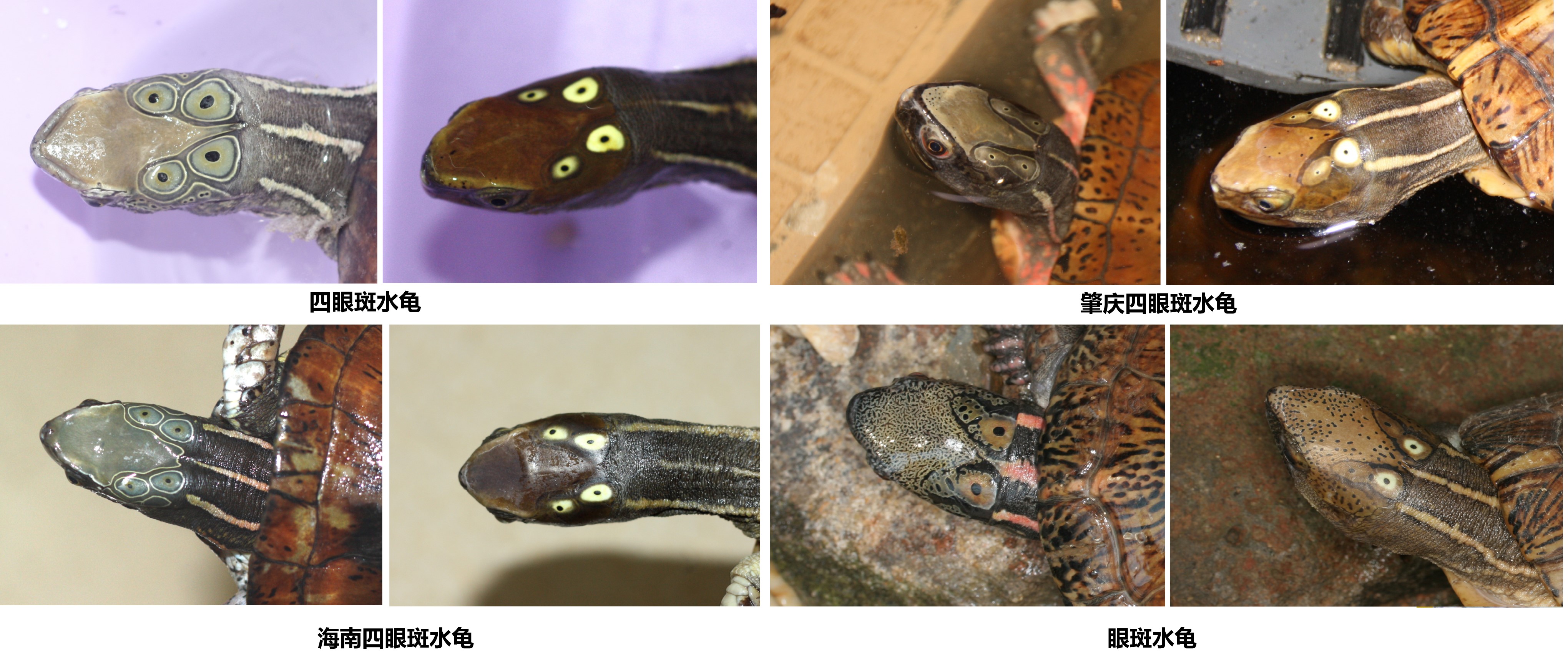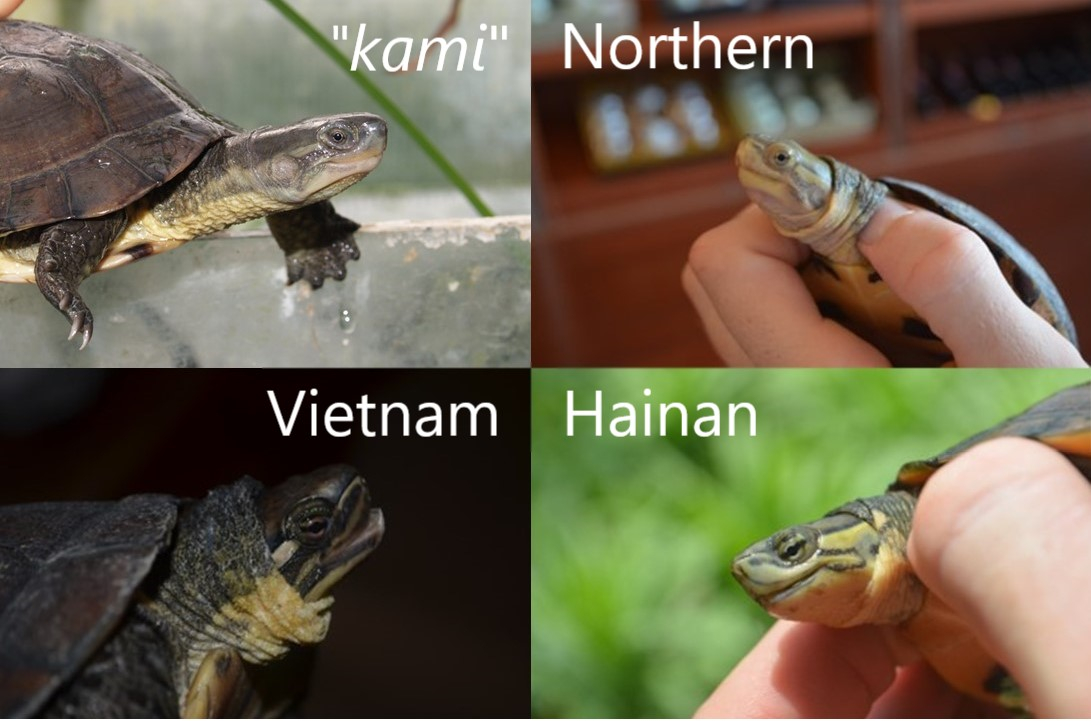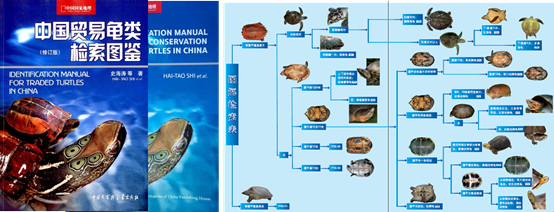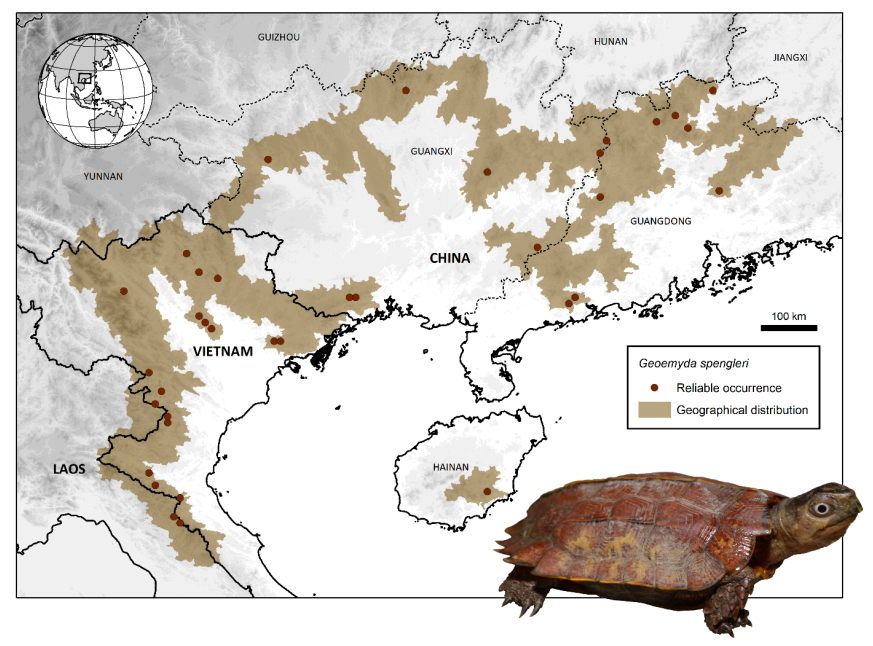
Due to their secretive behaviour and the difficulty of field research, the taxonomy and geographical distribution of most chelonians species have been confusing for a long time. Moreover, it is difficult to identify them because of their high degree of similarity, and the lack of professional talents and identification tools. This makes conservation, law enforcement and management extremely difficult, and there is an urgent need to innovate ideas and methods, compile identification manuals, and intensify training efforts to enhance conservation capacity and effectiveness.
1. Discovered a new species, a new subspecies and a new record of chelonians in China.
We discovered Sacalia bealei subgenus a new species of Hainan Sacalia insulensis, which makes the S. insulensis distributed in Hainan Island independent, and solves the academic dispute of whether this species is the same as the species with the same name, which bothered the experts at home and abroad for more than 80 years.
The discovery of the natural hybrid S. quadriocellata × S. bealei is the first discovery of natural hybrids of chelonians in China, dividing the genus Sacalia into seven evolutionarily significant units, enriching the species- and subspecies-level diversity of the genus of the S. bealei, and enhancing its conservation uniqueness.

Figure: Morphological differences in the heads of Sacalia bealei, Sacalia insulensis, S. quadriocellata × S. bealei
We clarified that Mauremys mutica on the north and south sides of the Pearl River belongs to two separate species, of which the north side is M. mutica, and the south side is actually a new subspecies of M. annamensis, which is also a new record of M. annamensis in China. We have also solved the 180-year problem of mistakenly treating the two species of Mauremys in the north and south of the Pearl River as the same species, mixing them with each other and releasing them for enrichment, thus causing genetic contamination.

Figure: Morphological difference between Mauremys mutica and M. annamensis
2. Six invalid species of chelonians have been rejected
The combination of molecular biology tools and morphometric studies has negated six invalid Cuora serrata, Mauremys iversoni, Sacalia pseudocellata, Ocadia philippeni, Mauremys pritchardi, Ocadia glyphistoma and other chelonians species. The main cause of this hybridisation is genetic contamination of farms. These research efforts received a special report from Nature.
3. A manual for identifying chelonians has been compiled with innovative techniques for image retrieval and is widely used in 120 countries.
Illegal trade in chelonians is the most serious of all wildlife species worldwide, and their identification by law enforcement is a common problem in the world. We have developed a chelonians identification manual in English and Chinese by applying the image search method created by our center, which contains 126 chelonians species from China and the rest of the world, covering most of the commonly traded species in the world, enabling non-specialists to quickly and accurately identify the species. It has been widely used as a teaching material for law enforcement identification, training and conservation in 120 countries. Since its publication in 2013, the electronic version of the book has been listed on the official websites of CITES (Convention on International Trade in Endangered Species of Wild Fauna and Flora), WWF (World Wide Fund for Nature), WCS (Wildlife Conservation Society International), China Wildlife Conservation Society, and the CITES management offices of more than 30 countries such as Greece, Mexico, etc. It has been downloaded for free in over a million copies and translated into Bengali, etc. and used in its national law enforcement training, and management of protected areas.

Figure: China Trade Turtles Index and Image Indexing Method (Chinese revised edition 2011; English edition 2013)
4. Clarified the global distribution of Geoemyda spengleri.
A detailed investigation and study on the distribution range, habitat selection and survival status of G. spengleri was carried out, the field distribution of G. spengleri in the world was clarified, and the longstanding disputes in the academic community about its distribution range was resolved. The global distribution of G. spengleri covers an area of 220,000 Km2 . The information on the geographical distribution of G. spengleri from central Vietnam, the Indonesian Archipelago, the Philippine Islands, and Anhui Province in China is erroneous. G. spengleri populations from Laos have a wider distribution range than previous studies. The presence of wild G. spengleri populations in the neighbouring areas of Yunnan, Hunan, Jiangxi and Guizhou in China and Quang Nam Province in Vietnam needs further study. The altitudinal range of G. spengleri 's distribution is between 530 and 1548 m, with a clear latitudinal gradient in the altitudinal distribution. Habitat fragmentation hinders the latitudinal migration of the tortoise. As global warming continues, G. spengleri populations distributed in high-altitude mountains may not be able to migrate to higher places to find suitable habitats, and the survival crisis will be further aggravated.

Figure: Global distribution map of ground turtles

 中文
中文 English
English





